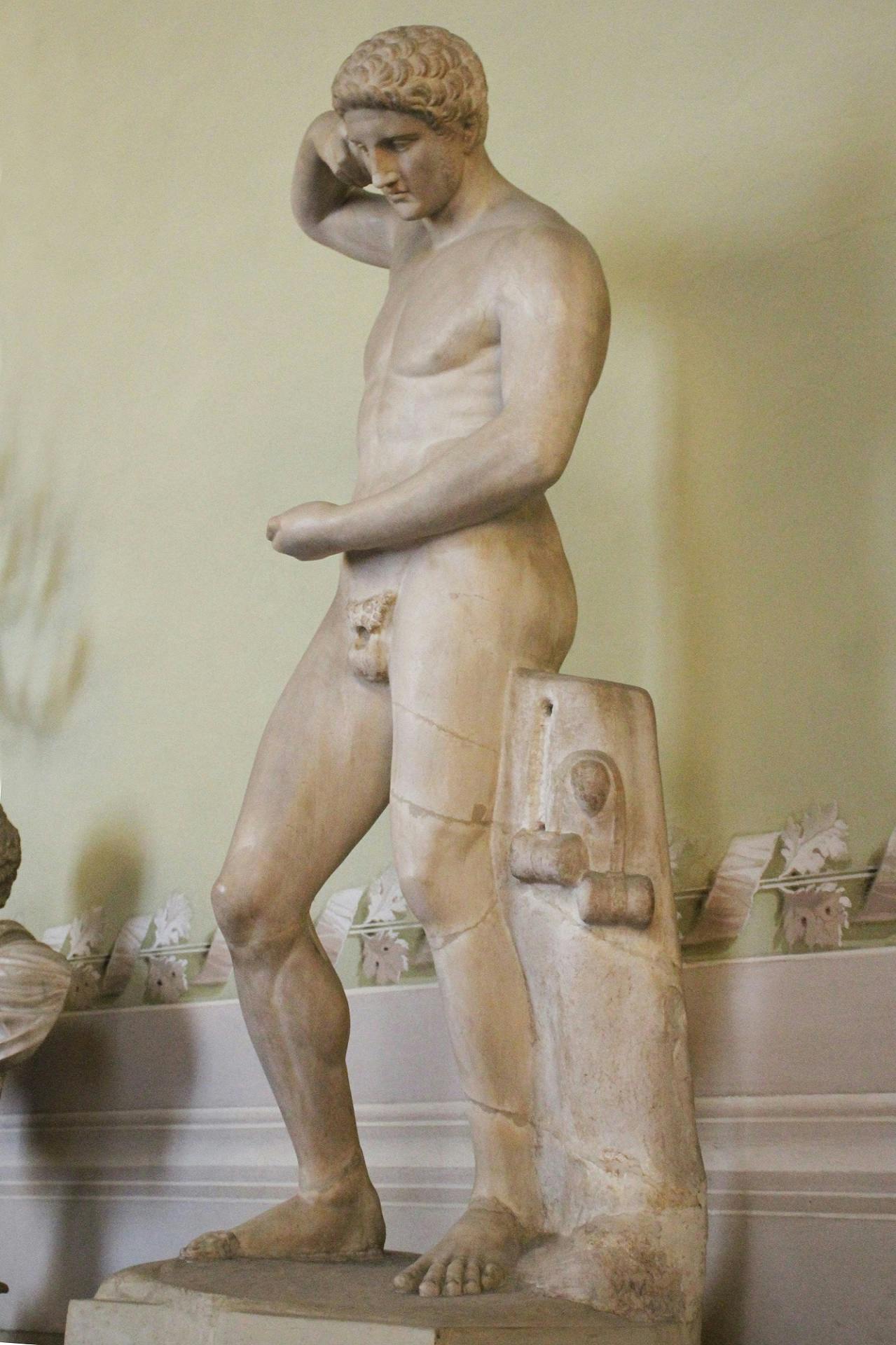Athlete
The modern additions to this sculpture are limited to the left foot, from the hands to the tip of the nose. Although it has been recomposed by numerous fragments, this sculpture is still an almost integral figure of an athlete, shown in a moment before wrestling, while covering himself in oil from a pyriform jar (known as an aryballos), which he holds in his raised left hand. This was widespread practice among wrestlers in the Greek world, who applied oil both to escape the adversary’s grip more easily and because of its anti-inflammatory properties, which meant greater resistance as an athlete. The Florentine marble, together with another copy in Dresden, gives its name to this type of statue, which has been dated back to the early decades of the 4th century B.C. and traced back to an unknown exponent of the second generation of sculptors from the school of Polycletus. What links the work by this unknown yet skilled craftsman to the famous artist is the lively, dynamic representation of the muscle masses, the angle of the head and the position of the arms, which create the illusion of a precarious static balance and agile movement. The lesson of Polycletus, whose Doryphoros shows a calibrated balance of contrasts and symmetries, applying the criteria he elaborated to represent a static figure with infinite potential for movement. Is here seemingly taken to its extremes, for a result of great expressive power.
The surface finishes and in particular, the hair, date this splendid figure of an athlete to somewhere around the early Antonine period. Before it was brought to Florence, towards the end of the 18th century, it had decorated the Gallery of Villa Medici on the Pincio Hill.
C. Ciatti in G. Capecchi, D. Heikamp, A. Fara, V. Saladino, Palazzo Pitti. La reggia rivelata, Catalogo della mostra (Firenze, Palazzo Pitti, 7 dicembre 2003-31 maggio 2004), Firenze 2003, p. 579, n. 128
